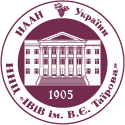Information on the condition of vineyards of Ukraine on November 1, 2020 year
Published: 01.11.2020 y., 07:08 | Author: Кузьменко Артем
During October, the weather in the wine-growing zone of Ukraine was quite warm. The average monthly air temperature was 12-17ºС. Maximum air temperatures rose to 24-25ºС in the first decade of October, and minimums dropped to 2-6 degrees Celsius at the beginning of the third decade. The amount of precipitation in October was 39 mm in Zaporizhia, 22 mm in Kherson, 34 mm in Mykolayiv, 10 mm in Odesa, and 98 mm in Uzhhorod.
Extreme growing conditions in 2020 affected the growth, development and yield of grapes. Extreme drought conditions were exacerbated by high weed infestation, overloading of plants with shoots and crops, nutrient deficiencies, poor protection and other factors. Plants that have grown in such conditions have insufficient growth of shoots, which is about 40-50% of the norm, depending on the variety and agronomic condition of the plantations. The level of maturation of annual shoots is different, it is the lowest in table grapes.
The available moisture reserves in the soil are insufficient for the normal overwintering of grape bushes. Therefore, in all irrigated areas it is necessary to carry out moisture-charging irrigation at a rate of 250-300 m3/ha with drip irrigation, 500-700 m3/ha – with sprinkling, 700-900 m3/ha – with surface irrigation.
In order to provide the best conditions for the accumulation of moisture in the autumn-winter period in fruit-bearing vineyards and 2-4-year-old plantations it is necessary to carry out chiseling between rows to a depth of 25-30 cm, in the area of the technological track – 15-20 cm.
Soil cover of young bushes should be carried out only after the fall of the leaves, and be sure to close the graft site for 1-2 nodes of annual shoot growth. After harvesting, it is necessary to add nutrients to the soil that the plant has consumed during the season. Fertilization of grapes in the fall is best done in two stages: the soil is first applied organic (rotted compost, humus, etc.), and then a complex mineral fertilizer.
Fertilizers for autumn fertilization of grapes must contain phosphorus and potassium, well, if they also contain magnesium and zinc. All these elements strengthen the plant’s immunity and help withstand cold and frost. Granular fertilizers are spread on the ground, followed by deep digging and watering. Phosphorus and potassium fertilizers for grapes combine well, so they are often used simultaneously. For example, 20-25 g of superphosphate and 10 g of potassium salt or 25 g of potassium sulfate are diluted in 10 l of water, to which 1 g of boric acid and 2 g of zinc sulfate can be added. The resulting solution is used per 1 m2 of vineyard. It should be borne in mind that on loose fertile soil it is enough to do it every 3 years, on sandy soils fertilizers are applied every 2 years, and if the vineyard is located on the sand, then such autumn fertilization of plants is carried out annually.

 Українська
Українська


